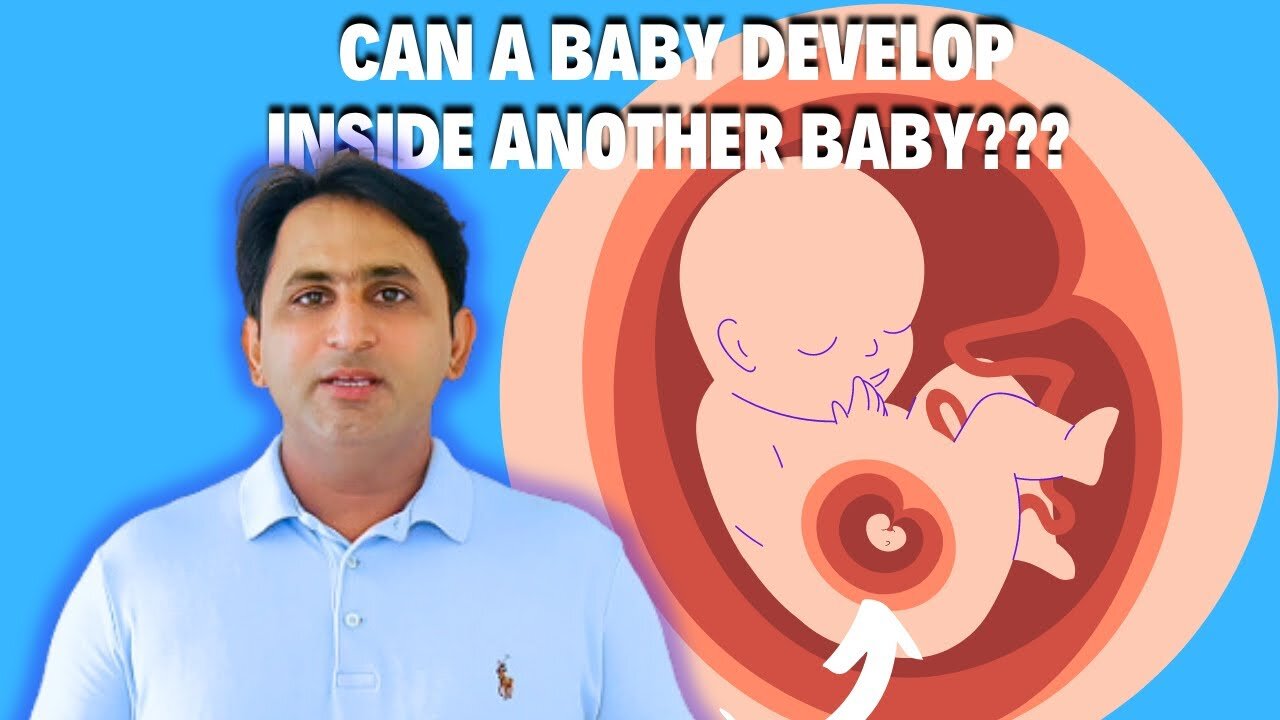Premium Only Content

Can a Baby Develop Inside Another Baby? Possible? کیا ایک بچہ دوسرے بچے کے اندر نشوونما پا سکتا ہے؟
Can a Baby Develop Inside Another Baby? Possible? کیا ایک بچہ دوسرے بچے کے اندر نشوونما پا سکتا ہے؟
#fetusinfetu #parasitictwins #babyinsideababy
Fetus in Fetu: Can a Baby Develop Inside Another Baby? Parasitic Twins
Fetus in fetu (FIF) is a rare congenital anomaly in which a malformed fetus is enclosed within the body of its twin. It is a parasitic twin, meaning that it survives by drawing nutrients from the host twin. The parasitic twin is usually much smaller than the host twin and lacks some organs. It is thought to be caused by an early defect in the development of the twins, such as unequal division of the fertilized egg.
FIF is a very rare condition, with an estimated incidence of 1 in 500,000 births. It is most often diagnosed in infants or young children, but it can also be found in adults. The symptoms of FIF vary depending on the size and location of the parasitic twin. Some common symptoms include:
Abdominal mass
Pain
Nausea and vomiting
Constipation
Urinary problems
Fever
The diagnosis of FIF is usually made with ultrasound or MRI. Treatment is surgical removal of the parasitic twin. This is usually a safe and successful procedure.
Here are some additional facts about fetus in fetu:
The parasitic twin is usually anencephalic, meaning that it does not have a brain.
The parasitic twin may have some other organs, such as a heart, lungs, or limbs.
The parasitic twin may be attached to the host twin by a stalk of tissue.
FIF is not a hereditary condition.
There is no way to prevent FIF.
The most common location of FIF is the retroperitoneum, which is the space behind the abdominal organs. Other possible locations include the chest, pelvis, neck, and head. The parasitic twin can be any size, but it is usually much smaller than the host twin.
The symptoms of FIF can be vague and nonspecific, so it can be difficult to diagnose. The most common symptoms are abdominal mass, pain, nausea and vomiting, constipation, urinary problems, and fever. If a child or adult presents with these symptoms, the doctor may order an ultrasound or MRI to look for a parasitic twin.
Treatment for FIF is surgical removal of the parasitic twin. This is usually a safe and successful procedure. The prognosis for the host twin is usually good, but it can depend on the size and location of the parasitic twin.
Here are some additional things to keep in mind about fetus in fetu:
The condition is more common in males than females.
The average age of diagnosis is 10 years old, but it can be diagnosed at any age.
There have been reports of FIF surviving for many years, but it is usually not compatible with life.
-
 LIVE
LIVE
barstoolsports
6 hours agoThe Shred Line with Coach Gruden, Dave Portnoy and Steven Cheah | Week 17
917 watching -
 LIVE
LIVE
WeAreChange
2 hours agoTrump Sides With Musk On Visas! MAGA Base ENRAGED??
1,809 watching -
 LIVE
LIVE
Nerdrotic
2 hours ago $1.54 earnedThe Program: The Government's UFO Cover Up Programs | Forbidden Frontier #085
1,541 watching -
 2:13:07
2:13:07
vivafrei
5 hours agoEp. 243: HOLIDAY SPECIAL! The Great H1B Visa Debate! Jay z Gets Scorched! Attack in Germany! & MORE!
72.8K139 -
 16:40
16:40
Russell Brand
6 hours agoTHIS MASSIVELY BACKFIRED...
84.4K296 -
 25:41
25:41
SB Mowing
10 hours agoPICTURE living next to THIS and not knowing what to do…
33.8K20 -
 2:16:01
2:16:01
George Galloway
1 day agoNEW YEAR COUNTDOWN - MOATS with George Galloway - EP 408
54.6K110 -
 18:39
18:39
Stephen Gardner
6 hours ago🔥BREAKING! Trump's SHOCKING New Demand | Biden admits DOJ TARGETED Trump Illegally!
41.4K188 -
 1:20:23
1:20:23
Josh Pate's College Football Show
12 hours ago $11.57 earnedCFP Prediction Special: OhioSt vs Oregon | UGA vs Notre Dame | Texas vs ASU | Boise vs PennSt
79.1K6 -
 7:50:03
7:50:03
Scottish Viking Gaming
10 hours ago💚Rumble :|: SUNDAY FUNDAY :|: Virginia has two Verginers, Change my Mind!
96.1K18